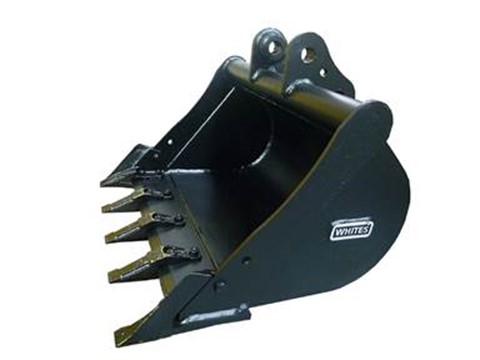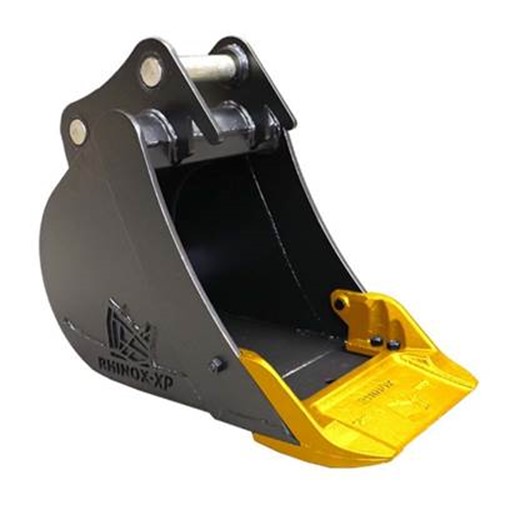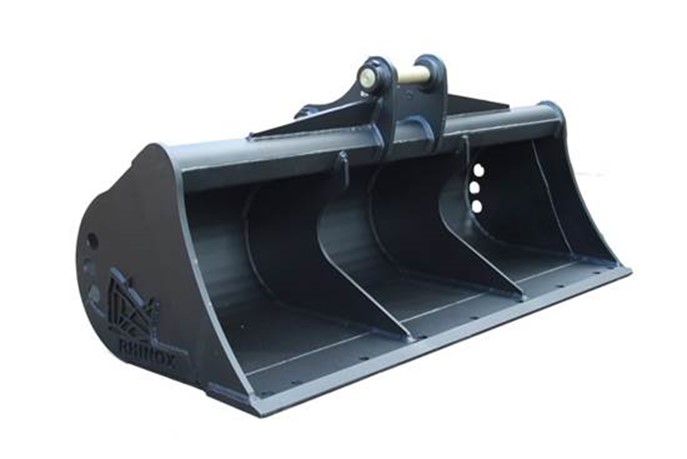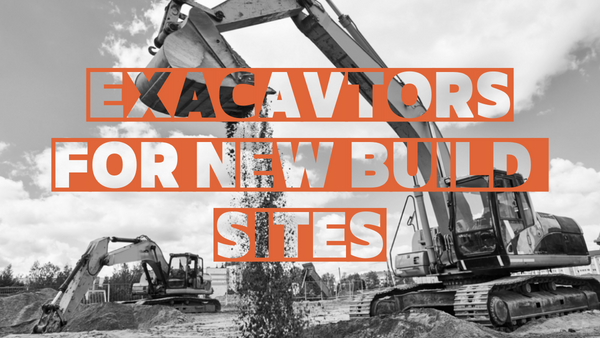What Size Excavator Do I Need For A New Build Site?
Ready to kick-start your brand-new build project? Well, if you are like many others out there, making your decision of “what size excavator do I need for a new build site” can be a tricky one. With so many makes, models, and sizes of excavators on the market, it can become a bit of a headache.
To help decide what size excavator you might need for your new build site, we have compiled this resource to help. This article is simply designed to guide you through how to choose the right excavator for all various of phases of construction.
Factors you to consider when choosing an excavator for a new build site
Whether you are new to the construction of housing or not, there are many factors that you should take into consideration when choosing the right excavator for the job. Start by assessing the following factors:
Uses
Having a full risk assessment and method statement for the excavator will always assist in your decision. From here, you can determine several requirements or features that you might need your excavator to do. Some of the most common applications of excavators on new build sites are digging, trenching, loading, unloading, lifting, grading and demolition.
It is very common throughout the construction industry to use a machine that will cover all bases. Therefore, if you are considering this method, always ensure you cover all your requirements from your method statement.
Ground pressure
Understanding the ground pressure will pay massive dividends when it comes to the latter stages of your project. Each new building site will have a ground capacity. This should be determined in your geological survey done before commencing work. Choosing an excavator that offers suitable ground pressure will maximise your efforts when it comes to working.
An excavator that exceeds a new build site ground pressure will ultimately cause unnecessary damage and cause over-compaction. Over-compaction can lead to unstable ground and its overall support capability.
Reach
The reach of your excavator makes a huge difference in your productivity levels. Having the ability to have the largest reach possible allows you to do more from one position. However, this doesn’t mean that you need to go out there and grab yourself the largest reach excavator you can.
It is all about balance. Choosing a long-reach excavator will comprise your overall lifting capacity. Resulting in reducing the amount of bulk you can move in one cycle. Choosing an excavator with a larger reach as standard will ultimately offer you far more productivity overall.
Lifting capacity
We previously have just touched on lifting capacity and how it can be affected by choosing a specialist long-reach excavator. But understanding your required lifting capacity is vital to selecting the right excavator for a new build site. As you are more than aware by now, excavators are used for far more than just digging on a new build site. Having the correct lifting capacity maximises your efforts and offers versatility in your hired excavator.
Cycle time
The cycle time of your choice of excavator is crucial to maximising your productivity. The factors that affect your cycle time are the operators’ capabilities, the capacity of the bucket, and the time to rotate the machine.
Larger excavators can wield bigger buckets and lift heavier loads, allowing you to move more at one time. So, bare this in mind when it comes to choosing the right excavator for a new build size.
Emissions
Emissions of the machinery you choose are important to how your business operates throughout your project. Why? Well, to meet the UK targets of 68% reduction of carbon emission by 2030 it is important to start choosing the right machinery now to preserve our world. It is extremely common that during the tendering process of a new build site, construction companies are challenged to produce documentation on how they aim to reduce their emissions.
Choosing stage v emissions equipment or better will reduce your overall emissions, reduce fuel spending and offer a cleaner and more productive way of working.
Types of excavator features
There are many types of excavator designs on the market to choose from. So knowing the difference between them can aid in your selection when using on a new build site. The most common tracked excavator types are:
Conventional
Conventional tail swing excavators have a rear counterweight profile that extends over the steel tracks when rotated. The counterweight plays an essential role in allowing the machine to balance. It keeps the centre of gravity of an excavator close to the centre of rotation, allowing operators to load and unload safely without tipping the equipment. Excavators already benefit from a low centre of gravity, however, machines that have large lifting capacities require larger counterweights.
Reduced tail swing (RTS)
Reduced tail swing excavators differ from conventional-style machines, as their bodies rotate only a small percentage over their tracks. They are designed so that the counterweight balances underneath the rear of the excavator to maximise distance away from its pivot. As there is less room for the counterweight to be housed, it has a direct impact on the total load capacity of the machine.
Zero tail swing (ZTS)
Zero tail swing excavators are similar to RTS. However, their body is always retained within the tracks of the machine. This means that operators can work up close to obstacles without having to worry about the cabin being damaged whilst turning.
Find out more about the advantages and disadvantages of these different types of machines here.
Budgeting for long-term excavator hire
Budgeting for long-term hire is important when it comes to choosing the right size excavator for a new build site. This can also influence the machine that you choose overall.
Once you have considered all of the factors we have highlighted, you may start to have an idea of the size and type of machine you might need. So how do you budget for excavator hire long term? Understanding your timeline and requirements is essential to your budgeting process. Commonly, you will require different excavators for various phases of construction.
The best way to understand what you need to budget for you can find in our resource “What Should You Budget For When Hiring an Excavator in the UK?”
To get an accurate cost of hiring a particular size of excavator you should enquire through your plant hire specialist. Long-term hire of machinery always attracts discounts which will benefit you in the long run.
Typical excavator buckets to use on a new build site
There are 3 most common types of excavator buckets that you can expect to use on a new build site. The best thing about them is that they should come as standard when you hire an excavator. Let’s have a look at them in a bit more detail.
Digging Bucket
Digging buckets are multipurpose attachments that come as standard with all diggers. They are equipped with blunt short teeth that can be used to penetrate the ground when lowered into the ground. These multi-purpose attachments are ideal if you are working with:
- · Dirt
- · Clay
- · Sand
- · Topsoil
- · Gravel or loose stone

Trenching Buckets
Trenching buckets are designed specifically for trench digging. They work extremely well for navigating small space areas for things such as piping, ducting and drain digging. The bucket’s design is narrow and fitted with a sharp flat blade to penetrate through dense, compact ground materials. Operators can be very precise in their excavation with this style of bucket. Trenching buckets are available on all excavators in a range of different sizes to suit.

Grading Bucket
Grading buckets are a popular choice for the more delicate of works with an excavator. Their design offers smooth and wide cutting edges that work best with all soft materials and soils. Grading buckets are a very popular choice when it comes to loading and unloading materials, grading, levelling and backfilling holes. These digger buckets are favoured by landscapers, road constructors, and construction sites during the export and import of materials and utility work.

Recommendations of sizes for each construction phase
To help you decide which type of excavator is suitable for which construction phase, here is a brief overview to help:
Phase 1 -Land preparation and foundations
Use large conventional or reduced tail swing excavators suitable to meet the requirements of your timescale. If you have an enormous amount of material to move then stick to machines that can offer you the highest bucket and lifting capacity. Ensure you adhere to your ground pressure survey to avoid over-compaction.
Phase 2- Substructure
Use a mixture of large and mid-size excavators to assist in your substructure phase. This will allow you to be far more accurate when it comes to the installation of so soak aways, utilities or additional pipework that is required.
Phase 3- Superstructure
Use large excavators with enough lifting capability to assist in the erection phase. It is also beneficial to use reduced tail swing excavators so that you can work closely to newly installed structures.
Phase 4- Roofs
Use large to mid-size excavators that have enough lifting capability to assist in the installation of roofs. You may also want to explore different attachments to help in this process.
Phases 5- First fix
As you are coming towards the latter stage of requiring an excavator in your project, you mustn’t undo the work you have already done. Ground-sensitive machines from 5T or less in weight should be adequate to assist you in the final stages.
Phase 6- Second Fix
Excavators are rarely used in the second fix stage of construction, however, if there is an immediate need for one, stick to lightweight machinery, especially for indoor work.
Phase 7- Surface Finishes
Excavators are uncommonly used within this phase.
Phases 8- External works paving etc
Use mini excavators with zero or reduced tail swing capabilities to assist during this phase. This will allow you to work close to buildings without compromising ground pressure or damaging buildings in their final stage of construction.
Who to choose to supply an excavator for a new build project?
Choosing an excavator supplier can be a tricky decision. Finding the right supplier to trust is always difficult, especially if you haven’t used them before. Aim to find a supplier that offers a wide range of machinery that is suitable for your project. This will save time and stress when you need machinery quickly.
WHC Hire Services specialises in the supply of excavators for new build and utility projects. This comes from 20 years of supplying some of the UK’s largest contractors with the latest and most efficient machinery on the market. Our ever-evolving fleet of excavators offers machines ranging from micro to 28T. All are equipped with low hours and stage v emissions. We are dedicated to bringing the highest quality machinery to our customers to enable them to get the job done. View our range of excavators and plant equipment here or call 01684377977 to discuss an excavator for your new build project.

